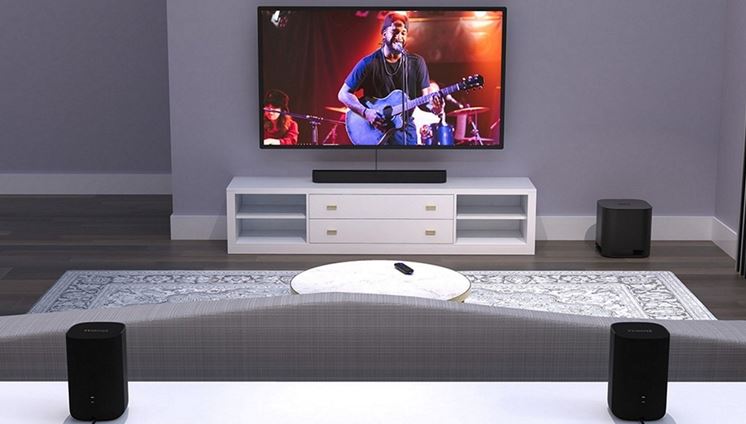We rely on the internet now more than ever. Our job, education, socialization, entertainment, or even basic necessities like paying bills depend heavily on the internet connection we have. Meanwhile, everyone looks for the fastest broadband service that you can completely rely on. Despite being a relatively new technology, fiber optic internet has surely gained become quite popular because it delivers what people look for – super fast speed. People who switched to this broadband service have a pretty good idea about it. Especially those who opted for it during the first wave of COVID, where everyone was either working from home, taking online classes, or simply binge-watching movies and TV shows.
However, if you have not been in the loop, then you may not know much about it. Well, you don’t have to worry about it. If you are wondering how does fiber optic internet work, then sit tight because we are going to break it down to you so you will understand how this amazing broadband service delivers an incredible and unmatched download and upload speed to its consumers.
How Does Fiber Internet Work?
Fiber optic cables are formed by essentially combining several optical fibers that are actually ten times thinner than human hair. The light then goes down a fiber optic link where each tiny particle of light reflects down the cable in a very smooth way. This is all done at an impressively fast pace.
The light hits glass cables at an angle that is less than 42 degrees and then it reflects against the glass. As a result, fiber internet transmits data in the form of light pulses through wires that are glass-based. If you are wondering what makes this connection so fast and reliable then this is the answer to your question. Also, this formation makes it significantly faster than cable connections.
Moreover, you can enjoy an even better bandwidth and frequency range if you go for fiber optic connections. In addition to this, you don’t have to worry about data being breached, intercepted, or stolen with this broadband service. With this internet connection, we have another good news for all those who want a secure connection that does not get damaged easily by any environmental damage, fiber lines are way more resistant to such external factors.
Now that you know how fiber internet works, we know that you still want to know the pros and cons of this broadband service. Don’t worry, we are not going to make you wait for it. So, without further ado, let’s jump right into the advantages and disadvantages of fiber optic internet connection.
The Pros and Cons of Fiber Optic Internet
Arguably, this relatively newer internet connection type comes with multiple advantages over the other broadband services. Hands down, it offers better speed, bandwidth, data limit, consistency, and reliability than the other internet connection types that are still widely available. It brings you more value than the rest, especially in terms of performance and symmetric download and upload speed.
However, it does have its drawbacks, just like the others, and in this section, we are going to break down all the pros and cons of fiber optic internet connection.
Pros
Superfast Speed
Fiber internet currently offers one of the highest speeds compared to the rest of the broadband services. Not only this, but it also offers wide bandwidth that can accommodate several users at the same time. So, you can say goodbye to data throttling or network congestion. One of the best things is that it delivers symmetrical speeds. This means that both your download and upload speed will be the same if you subscribe to one of the plans offered by a fiber optic internet service provider.
Low Latency
Latency is the amount of time it takes you to retrieve data over the internet after you have sent the command. In simpler words, it is a delay that holds quite an important position for heavy gamers and streamers. Low latency indicates that you will be able to retrieve the information faster and there will be minimal to no delays.
With fiber optic internet, you can eliminate the latency factor because it offers you lag-free browsing, streaming, overall internet experience. This could be an ideal option for gamers around the world. Also, if you tend to use live streaming apps often, then choosing this broadband service can really up your online game.
Cons
Limited Availability
One of the biggest drawbacks of fiber optic internet is probably its scarce availability around the country. It can take a considerable amount of time for it to become widely available for residential use. As of now, there are some internet service providers (ISPs) who are working to make the fiber-optic network available for people around the United States.
More Expensive
Generally, fiber optic internet connection is more expensive than other broadband services available around the country. However, the speed and performance you get in return make the investment worthwhile. But the good news is that as the ISPs are working to make it progressively more available, this means that the prices are going to come down very soon. This means that you can expect it to become more affordable soon.
Final Words
Internet providers are constantly on the roll when it specifically comes to introducing new technology that makes surfing way easier than before. With so many options out there, it can become pretty overwhelming to choose one that meets your needs the best. However, one of the latest technology that does not fail to disappoint us is probably fiber optic internet connection.
If you have been fascinated with this amazing technology, then now you have all your answers as we have provided you the necessary information regarding this up-and-coming broadband service called fiber optic internet. We hope that now you know everything you ever wanted to know about it.



